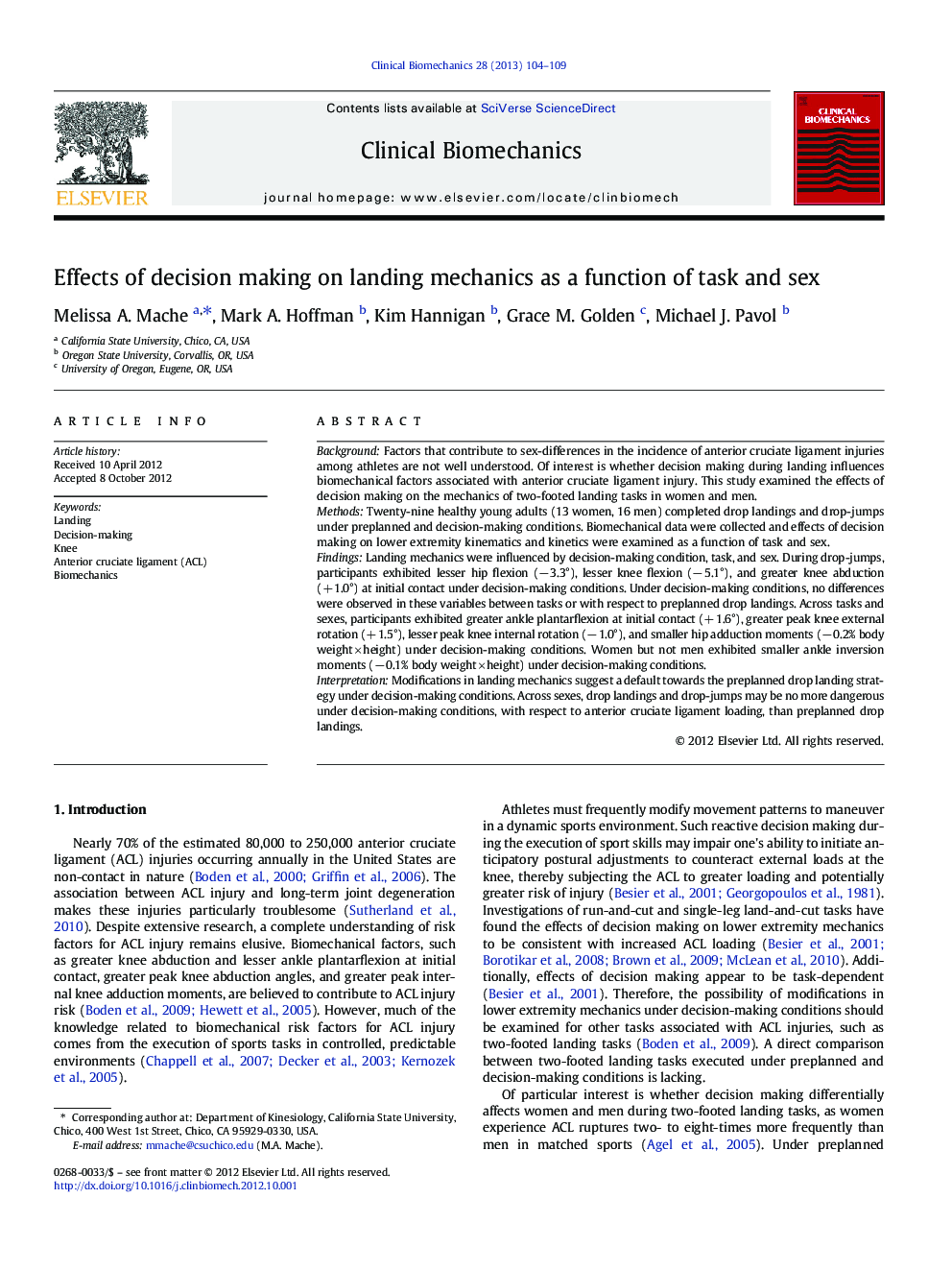| Article ID | Journal | Published Year | Pages | File Type |
|---|---|---|---|---|
| 4050400 | Clinical Biomechanics | 2013 | 6 Pages |
BackgroundFactors that contribute to sex-differences in the incidence of anterior cruciate ligament injuries among athletes are not well understood. Of interest is whether decision making during landing influences biomechanical factors associated with anterior cruciate ligament injury. This study examined the effects of decision making on the mechanics of two-footed landing tasks in women and men.MethodsTwenty-nine healthy young adults (13 women, 16 men) completed drop landings and drop-jumps under preplanned and decision-making conditions. Biomechanical data were collected and effects of decision making on lower extremity kinematics and kinetics were examined as a function of task and sex.FindingsLanding mechanics were influenced by decision-making condition, task, and sex. During drop-jumps, participants exhibited lesser hip flexion (− 3.3°), lesser knee flexion (− 5.1°), and greater knee abduction (+ 1.0°) at initial contact under decision-making conditions. Under decision-making conditions, no differences were observed in these variables between tasks or with respect to preplanned drop landings. Across tasks and sexes, participants exhibited greater ankle plantarflexion at initial contact (+ 1.6°), greater peak knee external rotation (+ 1.5°), lesser peak knee internal rotation (− 1.0°), and smaller hip adduction moments (− 0.2% body weight × height) under decision-making conditions. Women but not men exhibited smaller ankle inversion moments (− 0.1% body weight × height) under decision-making conditions.InterpretationModifications in landing mechanics suggest a default towards the preplanned drop landing strategy under decision-making conditions. Across sexes, drop landings and drop-jumps may be no more dangerous under decision-making conditions, with respect to anterior cruciate ligament loading, than preplanned drop landings.
